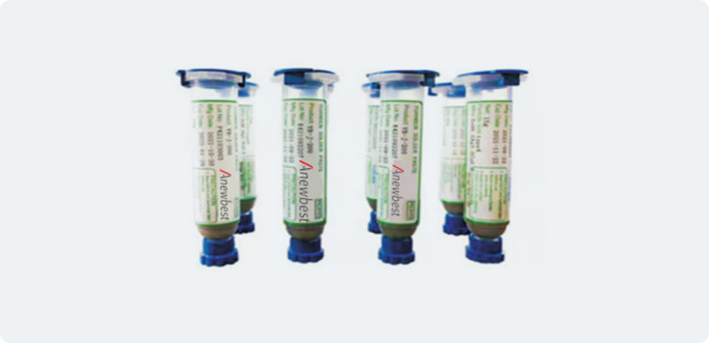29
2024
-
05
Unveiling the Top Secrets of Effective Post-Solder Cleaning
Author:
**Introduction: The Importance of Post-Solder Cleaning** In the world of manufacturing, post-solder cleaning is a crucial step in ensuring the quality and reliability of electronic components. Residues left behind after the soldering process can lead to corrosion, electrical shorts, and overall product failure. In this article, we will delve into the top secrets of effective post-solder cleaning,
**Introduction: The Importance of Post-Solder Cleaning**
In the world of manufacturing, post-solder cleaning is a crucial step in ensuring the quality and reliability of electronic components. Residues left behind after the soldering process can lead to corrosion, electrical shorts, and overall product failure. In this article, we will delve into the top secrets of effective post-solder cleaning, revealing the key techniques and best practices that will help you achieve optimal results.
**Understanding the Cleaning Process**
Before diving into the secrets of effective post-solder cleaning, it is essential to understand the cleaning process itself. Post-solder residues can vary in composition, from flux residues to solder balls and oxides. Each type of residue requires a specific cleaning approach to ensure complete removal without damaging the components.
**Secret #1: Choosing the Right Cleaning Method**
One of the most critical factors in achieving effective post-solder cleaning is selecting the appropriate cleaning method. There are various methods available, including solvent cleaning, aqueous cleaning, and vapor phase cleaning. Each method has its pros and cons, so it is essential to choose the one that best suits your specific cleaning requirements.
**Secret #2: Using the Right Cleaning Agents**
In addition to selecting the right cleaning method, choosing the correct cleaning agents is equally important. Different cleaning agents are designed to target specific types of residues, so it is essential to use the appropriate agent for the best results. Whether you opt for water-based cleaners, solvent-based cleaners, or specialized cleaning solutions, selecting the right cleaning agent can make a significant difference in the effectiveness of your cleaning process.
**Secret #3: Optimizing Cleaning Parameters**
Achieving optimal post-solder cleanliness also involves fine-tuning the cleaning parameters to maximize the efficiency of the cleaning process. Factors such as temperature, cleaning time, and agitation speed can all impact the effectiveness of the cleaning process. By carefully adjusting these parameters, you can ensure thorough and consistent cleaning results every time.
**Secret #4: Implementing Proper Handling and Storage Practices**
Even after completing the cleaning process, proper handling and storage practices are essential to maintain the cleanliness of the components. Avoiding contamination from external sources, such as dust and debris, is crucial to preserving the integrity of the cleaned components. Implementing proper handling and storage practices will help ensure that your components remain clean and free from contaminants.
**FAQs**
1. What are the common types of post-solder residues?
2. How do I choose the right cleaning method for post-solder cleaning?
3. What are the best practices for optimizing cleaning parameters?
4. How can I prevent contamination after completing the cleaning process?
5. What are the benefits of effective post-solder cleaning?
**Conclusion**
In conclusion, achieving effective post-solder cleaning requires a combination of the right cleaning method, cleaning agents, and cleaning parameters. By following the top secrets outlined in this article, you can ensure that your components are clean, reliable, and free from contaminants. Implementing these best practices will help you achieve optimal post-solder cleanliness and enhance the quality and reliability of your electronic products.
In the world of manufacturing, post-solder cleaning is a crucial step in ensuring the quality and reliability of electronic components. Residues left behind after the soldering process can lead to corrosion, electrical shorts, and overall product failure. In this article, we will delve into the top secrets of effective post-solder cleaning, revealing the key techniques and best practices that will help you achieve optimal results.
**Understanding the Cleaning Process**
Before diving into the secrets of effective post-solder cleaning, it is essential to understand the cleaning process itself. Post-solder residues can vary in composition, from flux residues to solder balls and oxides. Each type of residue requires a specific cleaning approach to ensure complete removal without damaging the components.
**Secret #1: Choosing the Right Cleaning Method**
One of the most critical factors in achieving effective post-solder cleaning is selecting the appropriate cleaning method. There are various methods available, including solvent cleaning, aqueous cleaning, and vapor phase cleaning. Each method has its pros and cons, so it is essential to choose the one that best suits your specific cleaning requirements.
**Secret #2: Using the Right Cleaning Agents**
In addition to selecting the right cleaning method, choosing the correct cleaning agents is equally important. Different cleaning agents are designed to target specific types of residues, so it is essential to use the appropriate agent for the best results. Whether you opt for water-based cleaners, solvent-based cleaners, or specialized cleaning solutions, selecting the right cleaning agent can make a significant difference in the effectiveness of your cleaning process.
**Secret #3: Optimizing Cleaning Parameters**
Achieving optimal post-solder cleanliness also involves fine-tuning the cleaning parameters to maximize the efficiency of the cleaning process. Factors such as temperature, cleaning time, and agitation speed can all impact the effectiveness of the cleaning process. By carefully adjusting these parameters, you can ensure thorough and consistent cleaning results every time.
**Secret #4: Implementing Proper Handling and Storage Practices**
Even after completing the cleaning process, proper handling and storage practices are essential to maintain the cleanliness of the components. Avoiding contamination from external sources, such as dust and debris, is crucial to preserving the integrity of the cleaned components. Implementing proper handling and storage practices will help ensure that your components remain clean and free from contaminants.
**FAQs**
1. What are the common types of post-solder residues?
2. How do I choose the right cleaning method for post-solder cleaning?
3. What are the best practices for optimizing cleaning parameters?
4. How can I prevent contamination after completing the cleaning process?
5. What are the benefits of effective post-solder cleaning?
**Conclusion**
In conclusion, achieving effective post-solder cleaning requires a combination of the right cleaning method, cleaning agents, and cleaning parameters. By following the top secrets outlined in this article, you can ensure that your components are clean, reliable, and free from contaminants. Implementing these best practices will help you achieve optimal post-solder cleanliness and enhance the quality and reliability of your electronic products.
post-solder cleaner
Previous page
undefined









